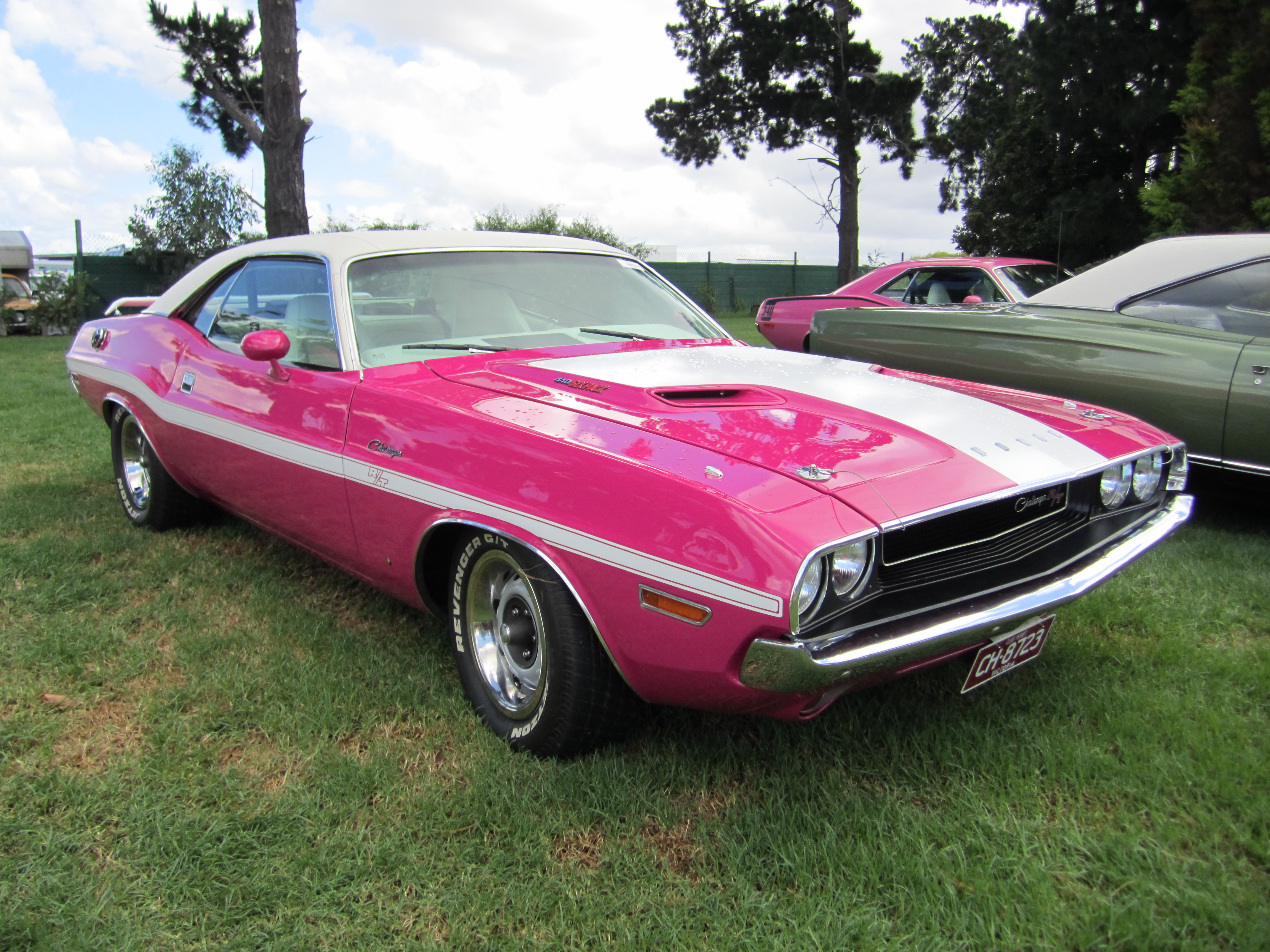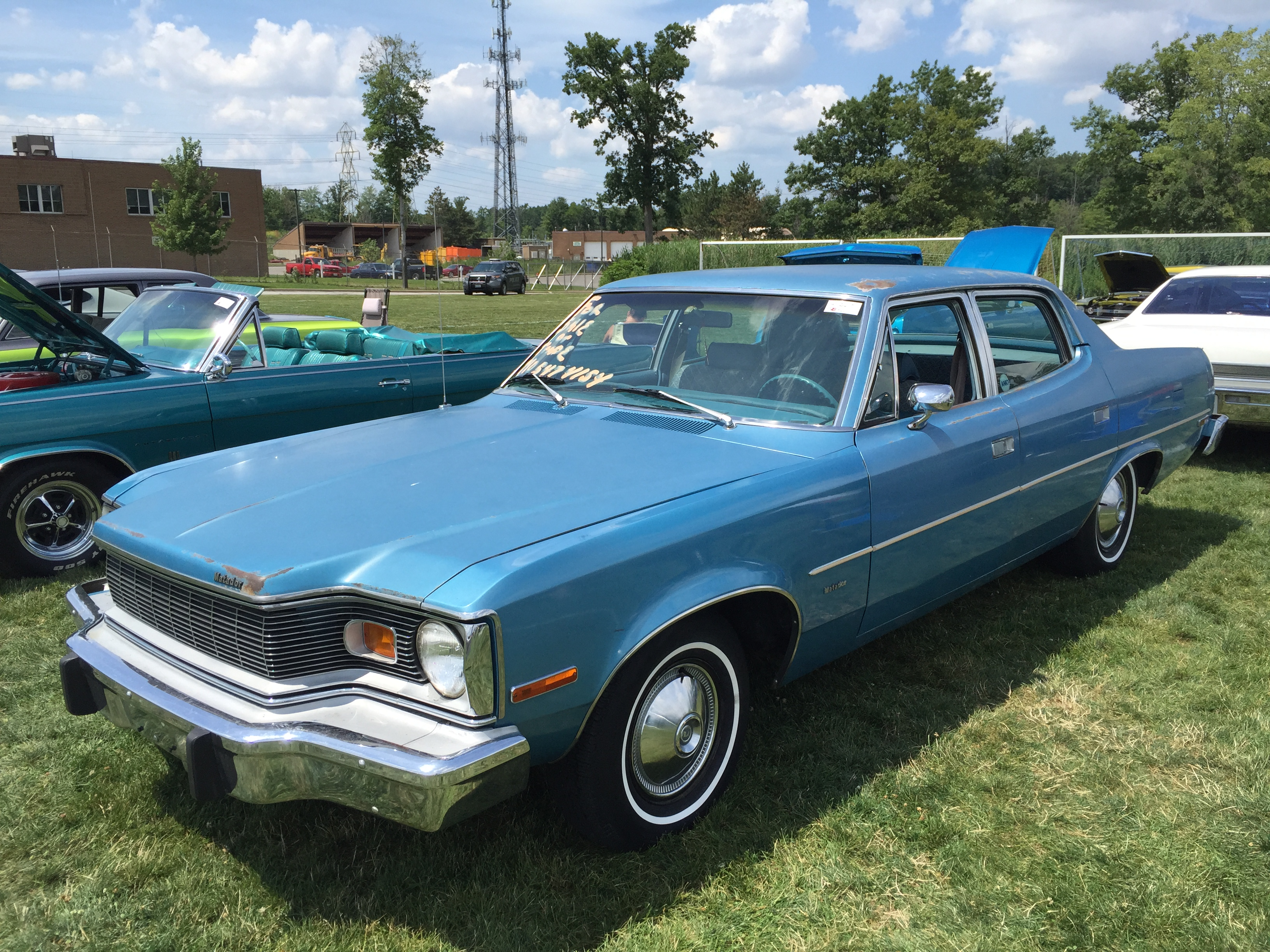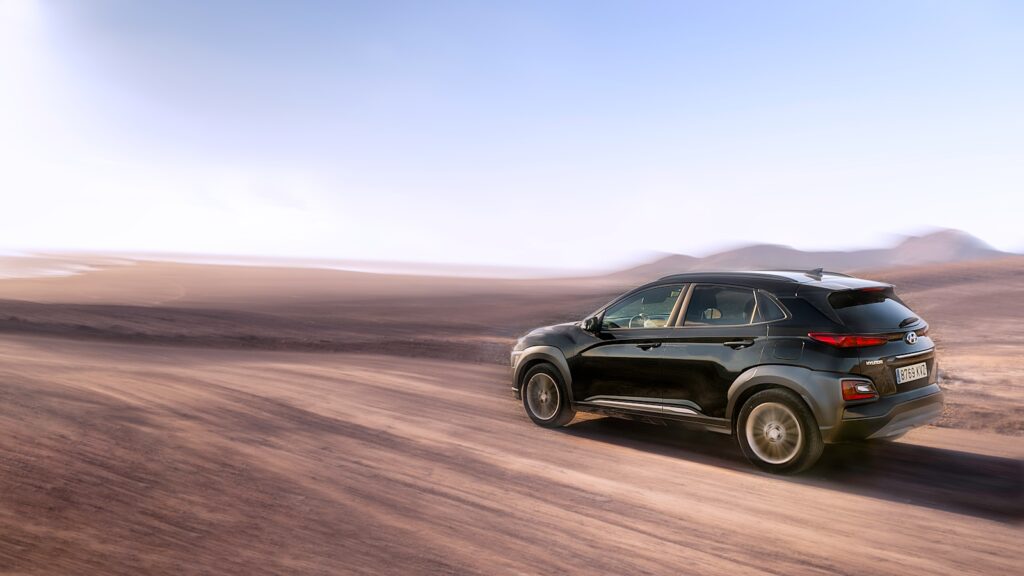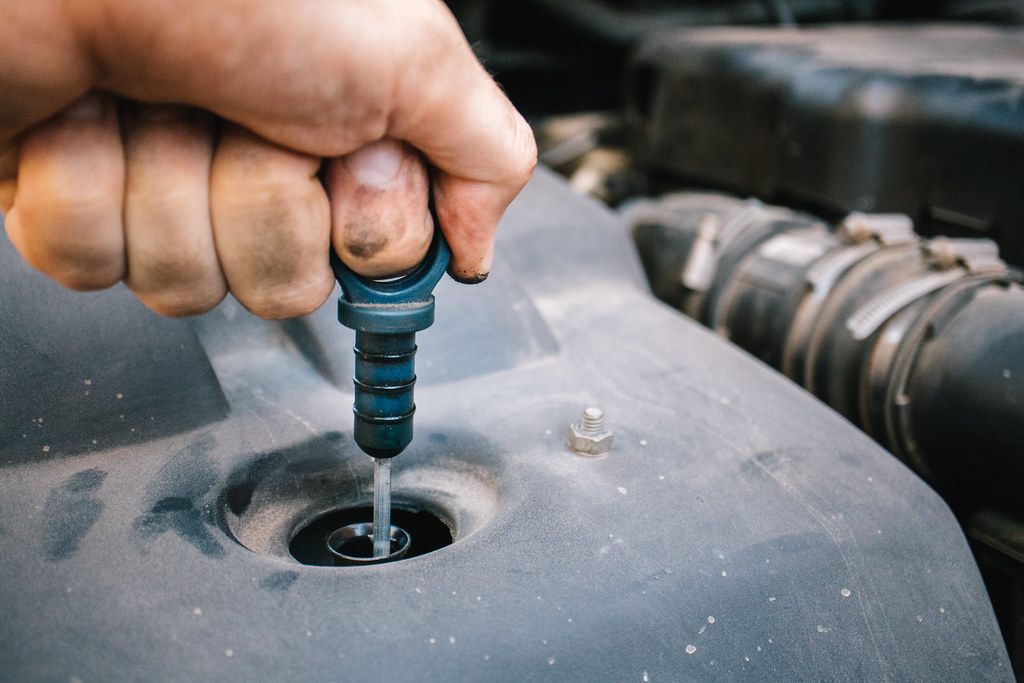
When we think about cars, our minds often jump to horsepower, sleek lines, or cutting-edge technology. But there’s a silent, yet powerful, element that shapes a vehicle’s identity, evokes nostalgia, and tells a story of its own: its color. For decades, automakers have crafted hundreds of iconic shades, colors that became inseparable from the very machines they adorned, turning ordinary metal into head-turning classics.
Yet, as time marches on, many of these distinctive factory paints have faded from option lists, replaced by a seemingly endless spectrum of grays, silvers, blacks, and whites. While modern metallics and pearls offer undeniable sophistication, they often lack the audacious spirit and instant recognizability of the vibrant hues from yesteryear. These colors weren’t just about aesthetics; they perfectly captured the zeitgeist of their era, reflecting bold statements and rebellious spirits.
But the tide is turning. With retro styling making a significant comeback across various industries, the timing couldn’t be more perfect for manufacturers to revisit some of these legendary hues. We’re about to embark on a fascinating journey through the archives of automotive history, unearthing eight incredible factory colors that did more than protect metal—they created automotive icons and sparked indelible memories. Get ready to rediscover these faded but treasured automotive masterpieces, and imagine the sheer delight of seeing them revived on today’s roads.

1. **Plum Crazy Purple (Dodge)**
Few colors scream muscle car era with as much undeniable force and personality as Dodge’s Plum Crazy Purple. This vibrant violet shade, a true icon of automotive bravado, famously adorned some of Mopar’s most legendary performance machines during the late 1960s and early 1970s. Challengers and Chargers wearing this bold hue were more than just cars; they became instant icons, embodying the raw power and rebellious spirit that defined the muscle car golden age.
It’s a testament to its enduring appeal that Dodge briefly reintroduced Plum Crazy for limited production runs, gracing new vehicles in 2010, 2014, and again in 2016. Each time this cherished color made a comeback, it wasn’t just a quiet addition to the palette; it generated immense excitement. Enthusiasts rushed to dealerships, eager to relive a piece of history and embrace a shade that continues to capture imaginations decades after its initial debut. Its ability to perfectly balance being eye-catching without ever looking childish is a difficult feat for any purple, marking it as a truly exceptional choice.
Plum Crazy represents more than just a specific color; it symbolizes an entire era when American automakers weren’t afraid to be truly bold. In today’s market, where silver, white, and black dominate showroom floors with an almost monochromatic grip, a properly executed purple option would instantly distinguish any vehicle wearing it. This shade carries a profound cultural significance that resonates not only with seasoned enthusiasts who remember the originals but also with younger buyers who never saw these cars when new.
Its brief returns have consistently generated buzz and extensive media coverage, far beyond what typical paint options usually receive. This isn’t just a marketing anecdote; it’s a proven phenomenon. For collectors, vehicles sporting the Plum Crazy hue are particularly sought after, often commanding significant premiums at auctions for well-preserved examples. This clearly demonstrates the lasting power and intrinsic value of a truly distinctive factory paint option, proving that bold color choices can indeed become an integral part of a brand’s heritage and identity.
Imagine the impact if this color were to return as a permanent option. It would undoubtedly give modern Dodge muscle cars a distinctive edge, making them stand out in a sea of grayscale competitors. This isn’t just about selling more cars; it’s about connecting with a passionate fanbase, celebrating a rich legacy, and injecting much-needed vibrancy back into our automotive landscape. Plum Crazy isn’t just a color; it’s a statement, and one that absolutely deserves to be made again.
Car Model Information: 2020 Dodge Challenger R/T
Name: Dodge Challenger
Production: 1969–1974,1977–1983,2008–2023
ModelYears: 1970–1974,1978–1983,2008–2023
Caption: 2015 Dodge Challenger SRT Hellcat
Manufacturer: Dodge
Categories: 1970s cars, 1980s cars, 2000s cars, 2010s cars, 2020s cars
Summary: The Dodge Challenger is the name of three generations of automobiles produced by the American automobile manufacturer Dodge. However, the first use of the Challenger name by Dodge dates back to 1959 for marketing a “value version” of the full-sized Coronet Silver Challenger.
From model years 1970 to 1974, the first-generation Dodge Challenger pony car was built using the Chrysler E platform in hardtop and convertible body styles sharing significant components with the Plymouth Barracuda.
The second generation, from model years 1978 to 1983, was a rebadged Mitsubishi Galant Lambda / Sapporo, a coupe version of an economical compact car.
The third and most recent generation is a full-size muscle car that was introduced in early 2008 initially as a rival to the evolved fifth generation Ford Mustang and the fifth generation Chevrolet Camaro.
In November 2021, Stellantis announced that the 2023 model year would be the final model year for both the LD Dodge Charger and LA Dodge Challenger, as the company will focus its plans on electric vehicles rather than fossil fuel-powered vehicles, due to tougher emissions standards required by the Environmental Protection Agency for the 2023 model year. Challenger production ended on December 22, 2023, and the Brampton, Ontario, assembly plant will be re-tooled to assemble an electrified successor.
Get more information about: Dodge Challenger
Buying a high-performing used car >>>
Brand: Dodge Model: Challenger
Price: $23,980 Mileage: 70,496 mi.

2. **Grabber Blue (Ford)**
Ford’s Grabber Blue burst onto the scene with the Mustang in 1969, and from that moment, it quickly solidified its place as one of the most recognizable colors in the entire pony car universe. This electrifying blue shade was more than just a paint job; it perfectly encapsulated the Mustang’s youthful energy and rebellious spirit, all while offering something distinctly different from its competitors. The vibrant tone, full of dynamic life, looked particularly striking against the black accents that were so familiar on performance models of the era, creating a visual punch that was hard to ignore.
Understanding its enduring appeal, Ford has wisely and periodically reintroduced versions of Grabber Blue over the decades. A memorable return was for the 2017 Mustang’s 50th anniversary, where the color once again proved just as eye-catching on modern sheet metal as it had been on the classic fastback. It’s a testament to the shade’s timeless design that it continues to capture attention and admiration, bridging generations of automotive enthusiasts. The color deftly walks that perfect line between bold and tasteful, managing to avoid the overly flashy quality that can sometimes make other bright colors appear dated.
What truly makes Grabber Blue exceptional is its remarkable ability to enhance the Mustang’s design lines without ever overpowering them. Unlike some performance colors that aggressively scream for attention, Grabber Blue maintains a sophisticated allure while still being instantly recognizable. It’s a color that asserts itself with confidence, yet remains elegant, allowing the iconic Mustang silhouette to truly shine. This delicate balance is a hallmark of truly brilliant automotive design.
Over the years, Grabber Blue has become so deeply associated with Ford performance that it’s practically an inherent part of the brand’s visual language. It’s not just a color; it’s a heritage marker. Photos of Grabber Blue Mustangs consistently generate more social media engagement than their standard-colored counterparts, a clear indication of its unique magnetism. Furthermore, the shade photographs exceptionally well, appearing vibrant and dynamic in almost any lighting condition, from the harsh glare of a sunny day to the soft glow of a showroom.
This makes Grabber Blue a marketing dream for manufacturers eager to showcase their vehicle lines and accentuate intricate contours. Its return, particularly to the current Mustang lineup, would not only offer a highly desirable aesthetic option but also forge an authentic and powerful connection to its illustrious heritage. It’s a color that speaks volumes without uttering a single word, echoing decades of speed, style, and American automotive passion.
Car Model Information: 2008 Ford Mustang GT Premium
Name: Ford Mustang
Caption: 2018 Ford Mustang GT 5.0
Aka: Ford T5 (Germany)
Manufacturer: Ford Motor Company
Production: March 1964 – present
ModelYears: 1965–present
Class: Unbulleted list
BodyStyle: Unbulleted list
Layout: Front-engine, rear-wheel-drive layout
Categories: 1970s cars, 1980s cars, 1990s cars, 2+2 coupés, 2000s cars
Summary: The Ford Mustang is an American automobile manufactured and marketed by Ford since 1964, as Ford’s longest nameplate in continuous production. Currently in its seventh generation, it is the fifth-best selling Ford car nameplate. The namesake of the “pony car” automobile segment, the Mustang was developed as a highly styled line of sporty coupes and convertibles derived from existing model lines, initially distinguished by its pronounced “long hood, short deck” proportions.
Originally predicted to sell 100,000 vehicles yearly, the 1965 Mustang became the most successful vehicle launch since the 1927 Model A. Introduced on April 17, 1964 (16 days after the Plymouth Barracuda), over 400,000 units were sold in its first year; the one-millionth Mustang was sold within two years of its launch. In August 2018, Ford produced the 10-millionth Mustang; matching the first 1965 Mustang, the vehicle was a 2019 Wimbledon White convertible with a V8 engine.
The success of the Mustang launch led to multiple competitors from other American manufacturers, including the Chevrolet Camaro and Pontiac Firebird (1967), AMC Javelin (1968), and Dodge Challenger (1970). It also competed with the Plymouth Barracuda, which was launched around the same time. The Mustang also had an effect on designs of coupes worldwide, leading to the marketing of the Toyota Celica and Ford Capri in the United States (the latter, by Lincoln-Mercury). The Mercury Cougar was launched in 1967 as a unique-bodied higher-trim alternative to the Mustang; during the 1970s, it included more features and was marketed as a personal luxury car.
From 1965 until 2004, the Mustang shared chassis commonality with other Ford model lines, staying rear-wheel-drive throughout its production. From 1965 to 1973, the Mustang was derived from the 1960 Ford Falcon compact. From 1974 until 1978, the Mustang (denoted Mustang II) was a longer-wheelbase version of the Ford Pinto. From 1979 until 2004, the Mustang shared its Fox platform chassis with 14 other Ford vehicles (becoming the final one to use the Fox architecture). Since 2005, the Mustang has used the D2C platform, unique to the Mustang.
Through its production, multiple nameplates have been associated with the Ford Mustang series, including GT, Mach 1, Boss 302/429, Cobra (separate from Shelby Cobra), and Bullitt, along with “5.0” fender badging (denoting 4.9 L OHV or 5.0 L DOHC V8 engines).
Get more information about: Ford Mustang
Buying a high-performing used car >>>
Brand: Ford Model: Mustang
Price: $16,785 Mileage: 81,832 mi.

3. **Rallye Green (Chevrolet)**C
Chevrolet’s Rallye Green made its debut during the glorious muscle car era, adorning iconic models like the Camaro and Chevelle with a truly distinctive metallic green. This wasn’t a flat, one-dimensional hue; instead, it possessed a fascinating depth, shifting beautifully between a rich emerald and a deep forest green depending on how the light caught its surface. Unlike some of the more boisterous period colors, Rallye Green offered a unique blend of sophistication alongside undeniable sportiness, presenting a perfect alternative for buyers who desired something distinctive but not quite as loud or overtly flashy as the typical muscle car palette.
Regrettably, this elegant and versatile color disappeared from Chevrolet’s official palette by the mid-1970s and, to the disappointment of many enthusiasts, has not made a proper return since. However, the advancement of modern metallic paints, which have become increasingly complex and capable of incredible depth, means that a contemporary version of Rallye Green could be even more impressive and captivating than the original. Imagine the shimmering effect, the nuanced shifts in tone, brought to life with today’s advanced paint technologies.
Furthermore, green as an automotive color has been largely abandoned by most manufacturers in recent decades, making it a rarity on new car lots. This scarcity, surprisingly, presents a significant opportunity. By reviving this classic shade, Chevrolet could instantly stand out from the crowd, reclaiming a unique aesthetic territory that has been left largely unexploited. It’s a chance to offer something fresh and distinctive precisely because it’s a nod to a cherished past.
Rallye Green represents an untapped market opportunity in today’s rather homogenous color landscape. While red, blue, and yellow performance cars remain relatively common, green has nearly vanished from modern performance vehicles, despite a consistent and vocal interest from enthusiasts. Online forums and social media groups are rife with desires for more green options across all manufacturers, demonstrating a clear demand that is currently unmet. This isn’t a niche fantasy; it’s a genuine longing for variety and character.
Beyond aesthetics, green’s inherent environmental associations also align remarkably well with modern marketing priorities. A forward-thinking manufacturer could strategically position a revived Rallye Green as both a heritage nod and an environmentally conscious choice, ingeniously bridging classic appeal with contemporary values. This color would look particularly striking on today’s angular designs, creating a distinctive and memorable option in an increasingly homogenized automotive landscape. It’s more than just a color; it’s a strategic move to differentiate and captivate.

4. **Petty Blue (Plymouth/Dodge)**
There are few automotive colors that carry a story as authentic and rich as Petty Blue, a shade so deeply intertwined with motorsport history that it’s named after the legendary NASCAR driver, Richard Petty himself. This distinctive light blue hue became synonymous with racing success throughout the 1960s and 1970s, making it an instant icon. Its origin is a fascinating tale: the color was born when Petty, in a moment of creative necessity, mixed white and dark blue paints to concoct his signature, unmistakable look for his race cars. This improvisation, born on the track, would soon become a legend on the road.
Recognizing its immense popularity and unique appeal, Chrysler wisely later made Petty Blue an official factory option for road cars. This incredible move allowed countless fans to own a literal piece of racing history, connecting their everyday drives to the thrilling world of NASCAR. The shade is truly unmistakable; it’s brighter than a typical baby blue but possesses less intensity than a sky blue, carving out its own distinctive and beloved place in the vast color spectrum. It’s a specific blue that evokes speed, championship, and the King himself.
During Plymouth’s performance heyday, Petty Blue was proudly offered on a variety of Mopar vehicles, extending its legacy beyond the race track to cars like the Road Runner and Super Bee. The profound connection to racing royalty—Richard Petty—bestowed upon the color a legitimacy and an unparalleled appeal that no manufactured color name could ever hope to match. This wasn’t just a marketing gimmick; it was an authentic endorsement from a living legend, making the color a symbol of triumph and performance for car buyers across America.
What truly makes Petty Blue special, and perpetually relevant, is its authentic, grassroots connection to motorsport history. In an era where manufacturers frequently create endless “special editions” and often contrive historical links, a color with genuine racing provenance like Petty Blue stands proudly apart. The shade carries a built-in storytelling potential that marketing departments dream about, offering a narrative of grit, innovation, and victory. Its revival would effortlessly connect modern Dodge and Chrysler products to their incredibly rich competition heritage, offering a tangible link to a glorious past.
Beyond its historical significance, the color also hits a sweet spot in terms of visibility—it’s noticeable, even striking, without being overtly garish. Petty Blue photographs beautifully, capturing attention with its unique vibrancy, and looks distinctive under showroom lights, inviting closer inspection. It remains instantly recognizable to die-hard racing fans while simultaneously appealing to general consumers who are seeking something different from the typical blues offered today. Its return would create an instant conversation piece for any vehicle wearing it, ensuring that the legacy of Richard Petty and a golden age of racing continues to inspire.
5. **Autumn Bronze (Pontiac)**
Pontiac’s Autumn Bronze first graced the automotive scene in the late 1960s, quickly establishing itself as a standout within the brand’s remarkably sophisticated palette of metallic colors. This wasn’t merely a brown; it was a profoundly complex copper-bronze hue, richly infused with subtle gold and amber undertones that created an almost liquid effect on the vehicle’s surface. Its true beauty lay in its ability to shift and transform dramatically, revealing new depths and nuances as light danced across its contours, a quality that truly set it apart from the more straightforward colors of its era. This elegant shade perfectly encapsulated Pontiac’s aspirational “premium performance” positioning, offering an upscale and distinctive alternative to the often brighter and bolder colors more commonly associated with muscle cars.
While the Pontiac brand itself might now reside in the annals of automotive history, the timeless appeal of Autumn Bronze presents a compelling case for its revival under a contemporary General Motors marque. Brands like Buick or Cadillac, known for their blend of luxury and subtle performance, could effortlessly reintroduce this distinguished hue. Moreover, bronze and copper tones have enjoyed a significant resurgence in popularity across diverse fields, from high-end interior design and contemporary fashion to consumer electronics, suggesting that the current market timing might be absolutely perfect for a sophisticated automotive application. This rich color would look particularly stunning when applied to the more sculptural and flowing body styles prevalent in today’s luxury and near-luxury segments, accentuating every curve and line with a refined glow.
Autumn Bronze offers a level of inherent sophistication and nuanced character that the ubiquitous contemporary silver and gray options simply cannot hope to match. It delivers a remarkable depth and personality, all while maintaining an air of tasteful elegance that avoids any hint of ostentation. One of its most captivating attributes is its chameleon-like ability to present an entirely different visual impression from dawn to dusk, truly adapting to varying viewing conditions. This dynamic quality would make it an especially intriguing choice in the highly visual age of social media, where a car’s unique aesthetic can garner widespread attention and appreciation through shares and posts.
High-end watch manufacturers and other luxury goods brands have long understood and successfully leveraged the power of bronze tones to signal exclusivity, unparalleled craftsmanship, and a discerning taste. An astute automaker could brilliantly tap into these very same powerful associations, creating a strong psychological connection to established benchmarks of luxury, all while simultaneously offering a tangible link to its own rich and storied heritage. In a premium vehicle market where neutral colors frequently dominate, a meticulously executed bronze option would immediately distinguish any model line brave enough to offer it as an exclusive, aspirational color choice, setting a new benchmark for elegance.
This isn’t just about adding another shade to a vehicle’s palette; it’s about making a profound statement that whispers refined luxury rather than shouting for attention. Autumn Bronze offers a mature, understated grandeur that would resonate deeply with buyers who actively seek individuality without ever resorting to overt flashiness. The subtle interplay of light and shadow on a vehicle’s intricate contours, rendered in this exquisite hue, can be truly mesmerizing, providing a constantly evolving aesthetic that feels remarkably premium and unique. This nuanced and sophisticated appeal could profoundly set a modern luxury vehicle apart, establishing a distinct visual identity that eloquently harks back to an era of thoughtful, deeply sophisticated design and enduring class.

6. **Panther Pink (Dodge)**
Perhaps one of the most audaciously bold factory colors ever unleashed onto American roads, Dodge’s Panther Pink—famously also known as Moulin Rouge when applied to Plymouth vehicles—was the undisputed embodiment of the early 1970s at their most uninhibited. This electrifying, shocking pink shade emblazoned iconic Challengers, powerful Chargers, and a host of other Mopar muscle cars during a thrilling, albeit brief, period when automakers were enthusiastically exploring an increasingly dramatic and vivid spectrum of colors. It didn’t just stand out; it absolutely epitomized an era when cars were unequivocally designed to be seen, to grab attention, and to make an unforgettable statement without apology.
Despite its inherent flamboyance, or perhaps precisely because of its fearless audacity, Panther Pink has cultivated an incredibly dedicated and passionate following among collectors. Vehicles featuring this exceptionally rare and vibrant color frequently command significant premiums at auction, a clear testament to its enduring magnetism and unique place in automotive lore. The shade represents a fascinating chapter in automotive history at its most creatively uninhibited, a moment before the sobering realities of fuel crises and tightening regulations began to subdue the industry’s wonderfully expressive and often wild creative freedom. Its reintroduction today would not merely be a color option; it would be an unmistakable, unapologetic statement of automotive rebellion and individuality.
In today’s rather conservative automotive color landscape, where a spectrum of grays and muted tones largely prevails, a meticulously executed modern version of Panther Pink would instantly generate an unparalleled amount of buzz and widespread media attention. While manufacturers do, on occasion, offer limited-run pink cars, often for charitable initiatives or niche markets, none have yet demonstrated the courage to make such a vibrant, mainstream pink a regular production option. The first truly mainstream brand to fearlessly do so would undoubtedly capture an incredible amount of attention and free publicity, far beyond what even the most substantial typical marketing budgets could hope to achieve, simply by making such a bold color choice.
The inherent rarity of Panther Pink, both historically and in the current market, makes it profoundly desirable among discerning collectors and enthusiasts who are actively seeking something truly different and daring. Furthermore, the advent of social media has fundamentally transformed how vehicles are perceived and shared, creating an environment where distinctive and visually striking automobiles can generate enormous amounts of organic exposure. This newfound digital landscape potentially makes bold and unconventional color choices, such as Panther Pink, significantly more commercially viable and impactful than they might have been in previous decades. A modern Panther Pink option would practically market itself through viral shares, enthusiastic posts, and captivating videos across all platforms.
Imagine the sheer delight and instant recognition of seeing a brand-new Charger or Challenger cruising down the highway, gleaming in this extraordinarily vibrant hue—it’s an instant conversation starter, an undeniable and glorious nod to an era when cars possessed an unbridled, exhilarating personality. This isn’t merely about adding another shade to a paint palette; it’s about resurrecting an entire attitude, a deeply ingrained sense of daring and creative freedom that has, lamentably, largely been lost in recent times. Panther Pink fundamentally challenges the conventional, celebrating automotive design as a dynamic art form rather than just a pragmatic utility. Its reintroduction would undoubtedly spark passionate debate, inspire a new generation of enthusiasts, and reignite a playful, audacious spirit in the often-too-serious automotive world.
Car Model Information: 2020 Dodge Challenger R/T
Name: Dodge Challenger
Production: 1969–1974,1977–1983,2008–2023
ModelYears: 1970–1974,1978–1983,2008–2023
Caption: 2015 Dodge Challenger SRT Hellcat
Manufacturer: Dodge
Categories: 1970s cars, 1980s cars, 2000s cars, 2010s cars, 2020s cars
Summary: The Dodge Challenger is the name of three generations of automobiles produced by the American automobile manufacturer Dodge. However, the first use of the Challenger name by Dodge dates back to 1959 for marketing a “value version” of the full-sized Coronet Silver Challenger.
From model years 1970 to 1974, the first-generation Dodge Challenger pony car was built using the Chrysler E platform in hardtop and convertible body styles sharing significant components with the Plymouth Barracuda.
The second generation, from model years 1978 to 1983, was a rebadged Mitsubishi Galant Lambda / Sapporo, a coupe version of an economical compact car.
The third and most recent generation is a full-size muscle car that was introduced in early 2008 initially as a rival to the evolved fifth generation Ford Mustang and the fifth generation Chevrolet Camaro.
In November 2021, Stellantis announced that the 2023 model year would be the final model year for both the LD Dodge Charger and LA Dodge Challenger, as the company will focus its plans on electric vehicles rather than fossil fuel-powered vehicles, due to tougher emissions standards required by the Environmental Protection Agency for the 2023 model year. Challenger production ended on December 22, 2023, and the Brampton, Ontario, assembly plant will be re-tooled to assemble an electrified successor.
Get more information about: Dodge Challenger
Buying a high-performing used car >>>
Brand: Dodge Model: Challenger
Price: $23,980 Mileage: 70,496 mi.

7. **Jamaica Blue (American Motors)**
Although the American Motors Corporation (AMC) might now be a cherished memory in automotive history, its distinctive Jamaica Blue remains one of the most captivating and memorable automotive colors to emerge from the vibrant 1970s. This incredibly deep, rich turquoise hue famously adorned iconic AMC models such as the sporty Javelin, the powerful AMX, and a variety of other performance-oriented vehicles, offering a truly unique and refreshing alternative to the often-standardized blues available from the larger, more conventional manufacturers of the time. The color was more than just paint; it perfectly encapsulated the era’s adventurous spirit, a sense of exploration and individuality that resonated deeply with buyers.
What made Jamaica Blue truly special was its remarkable ability to subtly shift and define itself right at the intriguing boundary between blue and green, presenting a different character depending on the specific lighting conditions. This inherent complexity imbued it with a visual depth and multifaceted appeal that simpler, flatter blues could never hope to achieve. With turquoise as a color enjoying a significant and sustained resurgence in popularity across various design fields, from contemporary fashion runways to sophisticated home interiors, the timing truly seems perfect for its thoughtful reintroduction as an automotive application. Given its rich heritage and adventurous spirit, Jeep, often considered the spiritual successor to the innovative AMC brand, would undoubtedly serve as the natural and most fitting home for a truly inspired Jamaica Blue revival, connecting its rugged legacy with a bold aesthetic.
Jamaica Blue represents an entire, vibrant color family that has, unfortunately, largely vanished from the array of automotive options available today. Despite their undeniable visual appeal and striking presence, accurate and richly saturated turquoise tones are now virtually nonexistent in today’s rather conservative new car market. This absence creates a gaping void and a unique opportunity. By reintroducing this specific shade, a forward-thinking manufacturer could not only capture a dedicated niche but also reawaken a longing for distinctive, expressive colors that stand apart from the monochrome dominance.
The color offers a striking and undeniable curb presence, making any vehicle adorned in it instantly noticeable, yet it deftly manages to avoid the sometimes juvenile associations of overly bright blues or the stark severity of darker navy shades. Its true brilliance is most apparent in natural sunlight, where its intricate complexity—the subtle dance between blue and green—becomes vibrantly apparent, truly captivating the eye. This dynamic quality makes it an ideal choice for vehicles that inherently emphasize an outdoor lifestyle and a spirit of adventure, perfectly aligning with today’s immensely popular crossover and SUV segments.
This isn’t just a simple blue; it’s a jewel-toned masterpiece that beautifully captures the essence of open roads, boundless horizons, and clear, inviting skies. Jamaica Blue offers a rare and exciting opportunity for a brand to carve out a distinct and memorable niche, appealing directly to those discerning buyers who passionately yearn for a vehicle that truly exudes personality and a profound sense of freedom. Its remarkable ability to evoke both serene tranquility and vibrant energy simultaneously is a uniquely powerful selling point, making it an exceptionally strong choice for models specifically designed to explore new paths or simply make an undeniably joyful statement. Bringing back such a nuanced and beautifully evocative color would undoubtedly be a bold and refreshing step, but one that could genuinely resonate with a substantial segment of buyers who are increasingly weary of the prevailing monochrome landscape.

8. **Calypso Coral (Ford)**
Ford’s Calypso Coral first burst onto the scene in 1969, making an unforgettable debut as a cornerstone of the special “Spring Colors” promotional campaign for the iconic Mustang. This incredibly vibrant orangey-red shade was an immediate sensation, swiftly becoming one of the most sought-after and recognizable colors for Ford’s burgeoning lineup of performance vehicles. What made Calypso Coral truly unique was its perfectly balanced position within the color spectrum: it wasn’t quite a pure red, nor was it simply an orange. Instead, it carved out a distinctive and beloved space that very few other manufacturers at the time were able to successfully capture or replicate, making it an instant classic.
The color possesses an unmistakable warmth and an energetic vivacity that pure, unadulterated reds simply cannot match, giving it a playful yet powerful appeal. It looked particularly striking and dynamic on vehicles that featured contrasting black accents, creating a dramatic visual interplay that expertly emphasized the powerful body lines and aggressive stance of performance models. While Ford did, on occasion, offer similar shades in subsequent decades, none ever quite managed to capture the precise magic and charismatic appeal of the original Calypso Coral. Its triumphant return today would not only offer a highly desirable aesthetic option but would also provide modern Mustangs and Broncos with a genuine, tangible connection to their incredibly rich and storied heritage, celebrating a golden age of design.
This isn’t just another bright color to be added to a palette; it’s a nostalgic and exhilarating blast from the past that perfectly encapsulates an era of unbridled optimism and groundbreaking automotive innovation. Calypso Coral stands out with an unmistakable personality, offering a cheerful, spirited, and inherently sporty alternative to the often more serious or muted performance hues that tend to dominate the market. Its remarkable ability to evoke a profound sense of playfulness and youthful energy while still appearing genuinely dynamic and purposeful is a testament to its brilliant and thoughtful original design, which has stood the test of time with remarkable grace and continued relevance.
In today’s ever-evolving automotive market, where bold and truly expressive color choices are making a tentative but noticeable comeback, Calypso Coral is perfectly positioned to lead the charge and inspire a new wave of vibrant aesthetics. It holds an appeal that transcends generations, captivating a broad demographic ranging from classic car aficionados who fondly remember its glory days to younger buyers actively seeking something that truly pops and authentically reflects their energetic and individualistic spirit. Its vibrant intensity is inherently suited for dynamic vehicles like the legendary Mustang or the rugged and adventurous Bronco, where it would amplify their inherent adventurous character and stand proudly as a beacon against the often-subdued palette of many competitors.
Moreover, the profound visual impact of Calypso Coral extends far beyond mere aesthetic charm; it eloquently tells a compelling story of creative innovation and a courageous willingness to push design boundaries. When thoughtfully paired with cutting-edge modern vehicle technology and sleek, contemporary lines, this exquisite vintage shade creates a truly compelling juxtaposition of timeless classic charm and exhilarating, forward-thinking performance. It represents a strategic choice that can not only significantly boost sales by capturing a unique and underserved market segment but also substantially enhance a brand’s overall image as one that deeply respects its rich heritage while simultaneously embracing and championing forward-looking, imaginative design. Calypso Coral isn’t just a color; it’s a vibrant and enduring legacy eagerly waiting to be triumphantly reborn.
Car Model Information: 2008 Ford Mustang GT Premium
Name: Ford Mustang
Caption: 2018 Ford Mustang GT 5.0
Aka: Ford T5 (Germany)
Manufacturer: Ford Motor Company
Production: March 1964 – present
ModelYears: 1965–present
Class: Unbulleted list
BodyStyle: Unbulleted list
Layout: Front-engine, rear-wheel-drive layout
Categories: 1970s cars, 1980s cars, 1990s cars, 2+2 coupés, 2000s cars
Summary: The Ford Mustang is an American automobile manufactured and marketed by Ford since 1964, as Ford’s longest nameplate in continuous production. Currently in its seventh generation, it is the fifth-best selling Ford car nameplate. The namesake of the “pony car” automobile segment, the Mustang was developed as a highly styled line of sporty coupes and convertibles derived from existing model lines, initially distinguished by its pronounced “long hood, short deck” proportions.
Originally predicted to sell 100,000 vehicles yearly, the 1965 Mustang became the most successful vehicle launch since the 1927 Model A. Introduced on April 17, 1964 (16 days after the Plymouth Barracuda), over 400,000 units were sold in its first year; the one-millionth Mustang was sold within two years of its launch. In August 2018, Ford produced the 10-millionth Mustang; matching the first 1965 Mustang, the vehicle was a 2019 Wimbledon White convertible with a V8 engine.
The success of the Mustang launch led to multiple competitors from other American manufacturers, including the Chevrolet Camaro and Pontiac Firebird (1967), AMC Javelin (1968), and Dodge Challenger (1970). It also competed with the Plymouth Barracuda, which was launched around the same time. The Mustang also had an effect on designs of coupes worldwide, leading to the marketing of the Toyota Celica and Ford Capri in the United States (the latter, by Lincoln-Mercury). The Mercury Cougar was launched in 1967 as a unique-bodied higher-trim alternative to the Mustang; during the 1970s, it included more features and was marketed as a personal luxury car.
From 1965 until 2004, the Mustang shared chassis commonality with other Ford model lines, staying rear-wheel-drive throughout its production. From 1965 to 1973, the Mustang was derived from the 1960 Ford Falcon compact. From 1974 until 1978, the Mustang (denoted Mustang II) was a longer-wheelbase version of the Ford Pinto. From 1979 until 2004, the Mustang shared its Fox platform chassis with 14 other Ford vehicles (becoming the final one to use the Fox architecture). Since 2005, the Mustang has used the D2C platform, unique to the Mustang.
Through its production, multiple nameplates have been associated with the Ford Mustang series, including GT, Mach 1, Boss 302/429, Cobra (separate from Shelby Cobra), and Bullitt, along with “5.0” fender badging (denoting 4.9 L OHV or 5.0 L DOHC V8 engines).
Get more information about: Ford Mustang
Buying a high-performing used car >>>
Brand: Ford Model: Mustang
Price: $16,785 Mileage: 81,832 mi.
As we close the book on these eight remarkable colors—from the audacious Plum Crazy to the sun-kissed Calypso Coral—it becomes abundantly clear that their enduring appeal extends far beyond mere pigment on metal. They are vivid threads inextricably woven into the rich tapestry of automotive history, each encapsulating distinct eras, bold attitudes, and an unbridled passion for the open road. The notion of their potential return isn’t just a whimsical fantasy; it represents a genuine, tangible opportunity for today’s automakers to inject much-needed vibrancy, profound character, and compelling narrative back into a market often dominated by safe, conventional choices. By thoughtfully looking back and drawing inspiration from these vibrant masterpieces, we can collectively drive forward with greater individuality, excitement, and a renewed sense of style, reminding us all that sometimes, the rarest and most treasured hues are precisely the ones that have simply been waiting patiently to be gloriously rediscovered. These faded but treasured colors aren’t merely paint options; they are vibrant invitations to rekindle a passionate love affair with the automobile, one unforgettable, iconic shade at a time.




